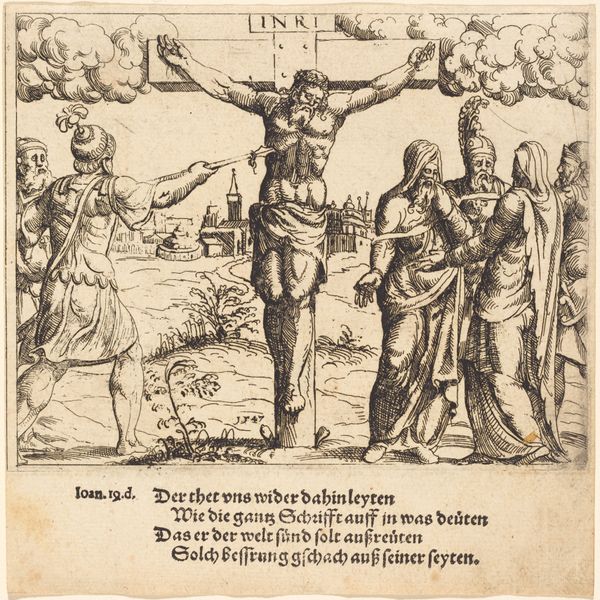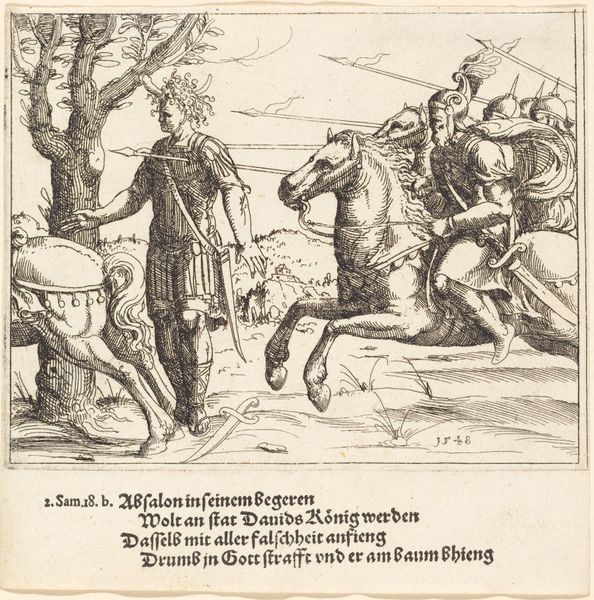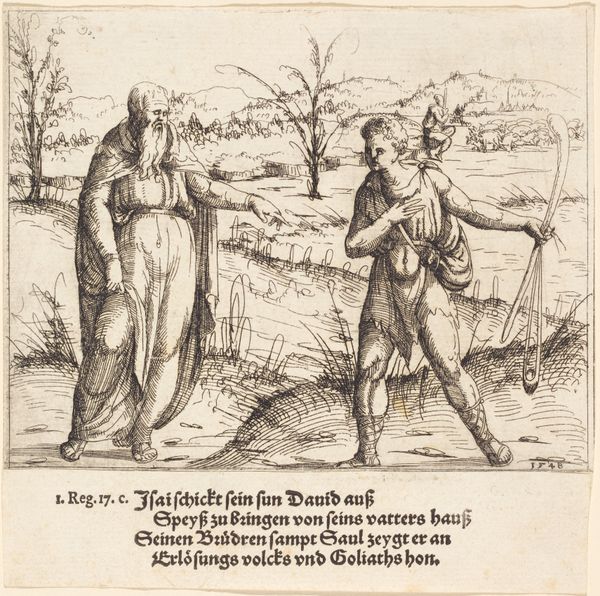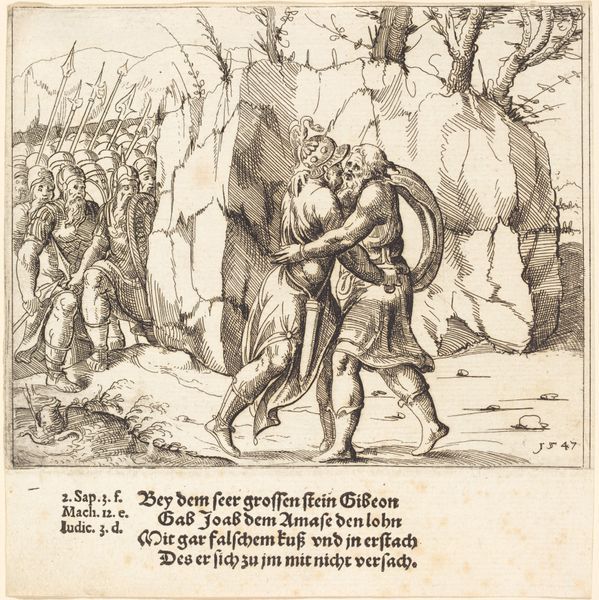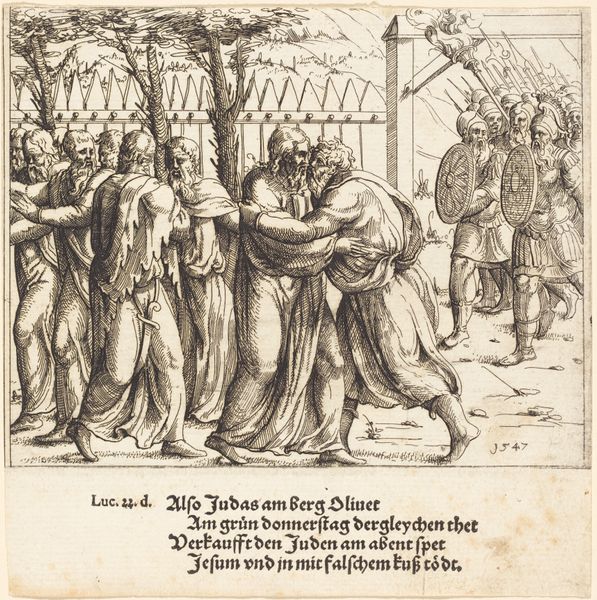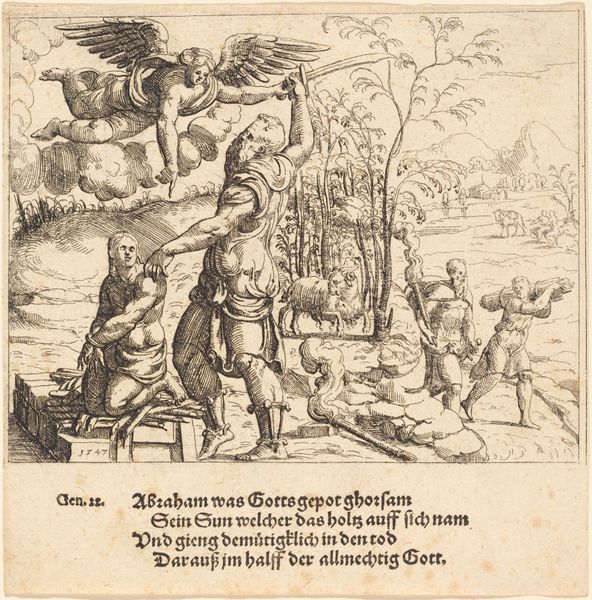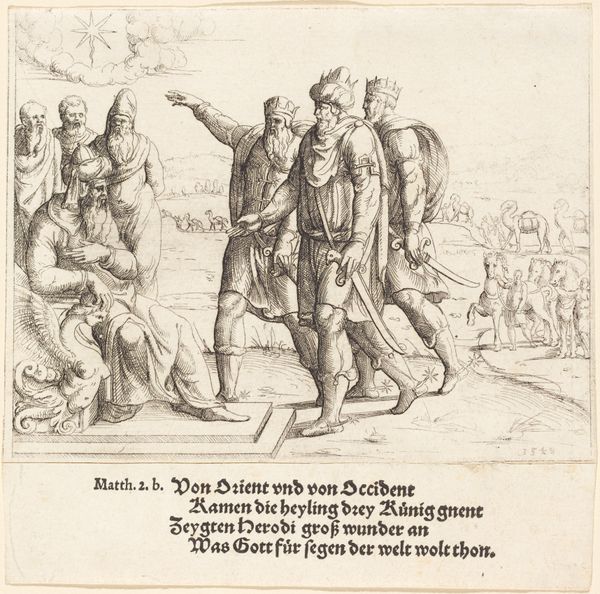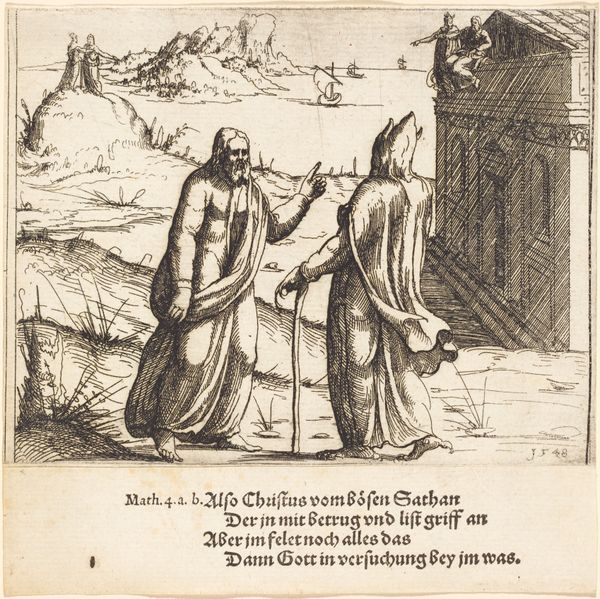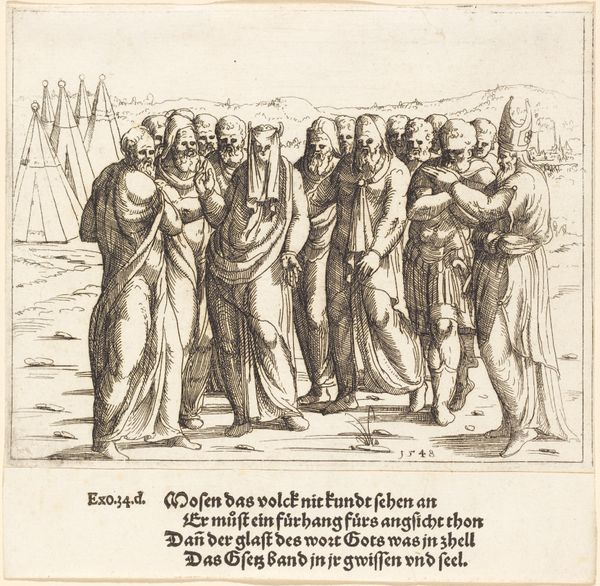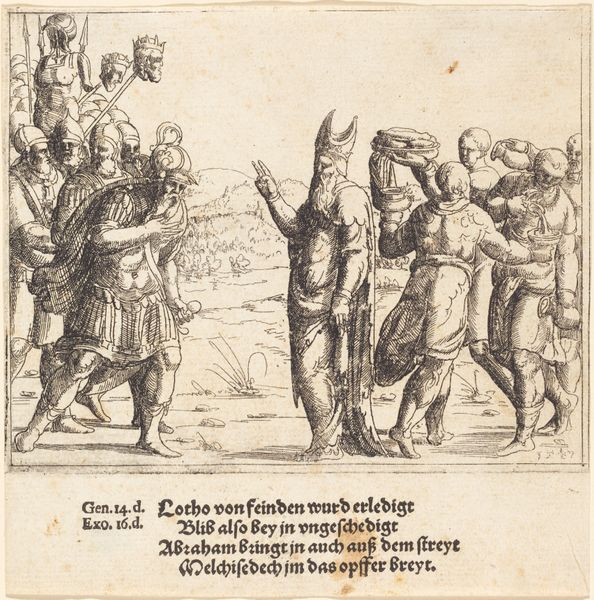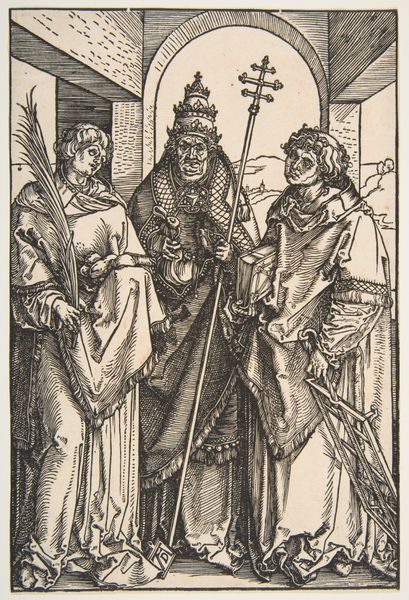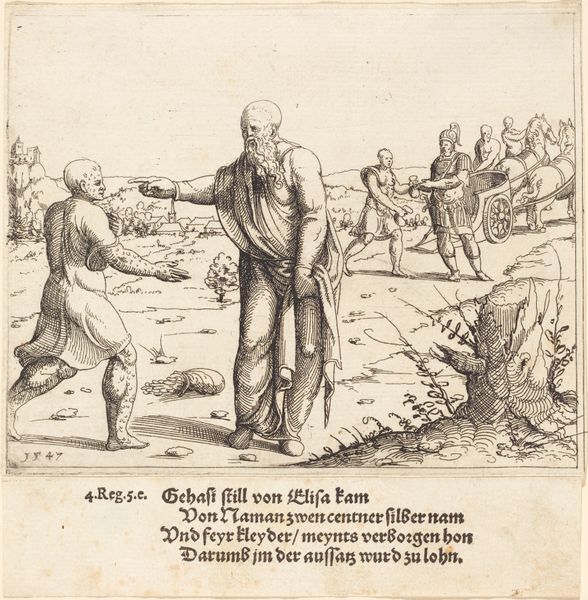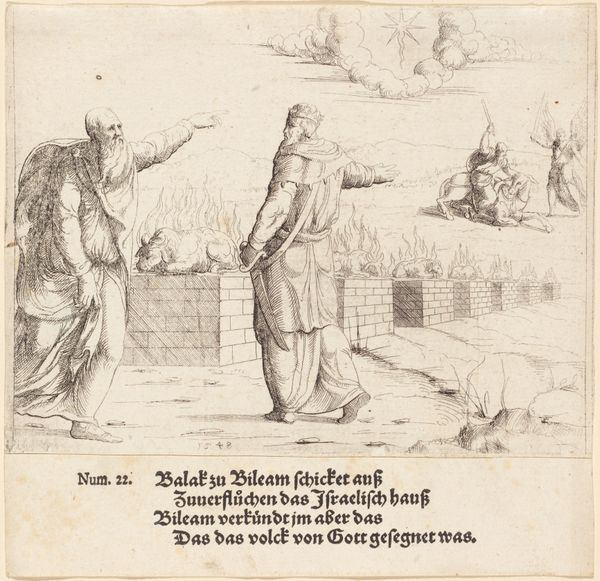
print, engraving
#
narrative-art
# print
#
figuration
#
line
#
history-painting
#
northern-renaissance
#
engraving
Copyright: National Gallery of Art: CC0 1.0
This print of Judas, made by Augustin Hirschvogel, probably around 1548, is an etching on iron. Hirschvogel was one of the first to use this technique, which involves covering a metal plate with wax, drawing a design into the wax, and then submerging the plate in acid. The acid bites into the exposed metal, creating lines that can then be inked and printed. The image’s social significance lies in this relatively new medium. Etching allowed for much finer detail and tonal variation than earlier printmaking methods like woodcut. This meant that prints could become more sophisticated, more closely resembling drawings or paintings. As a result, printmaking became a more respected art form and a more viable career for artists. The commercialization of printmaking also made art more accessible to a wider audience, contributing to a broader circulation of ideas and images in society. In looking at this print, consider how a new way of making impacted the culture of the Renaissance.
Comments
No comments
Be the first to comment and join the conversation on the ultimate creative platform.
